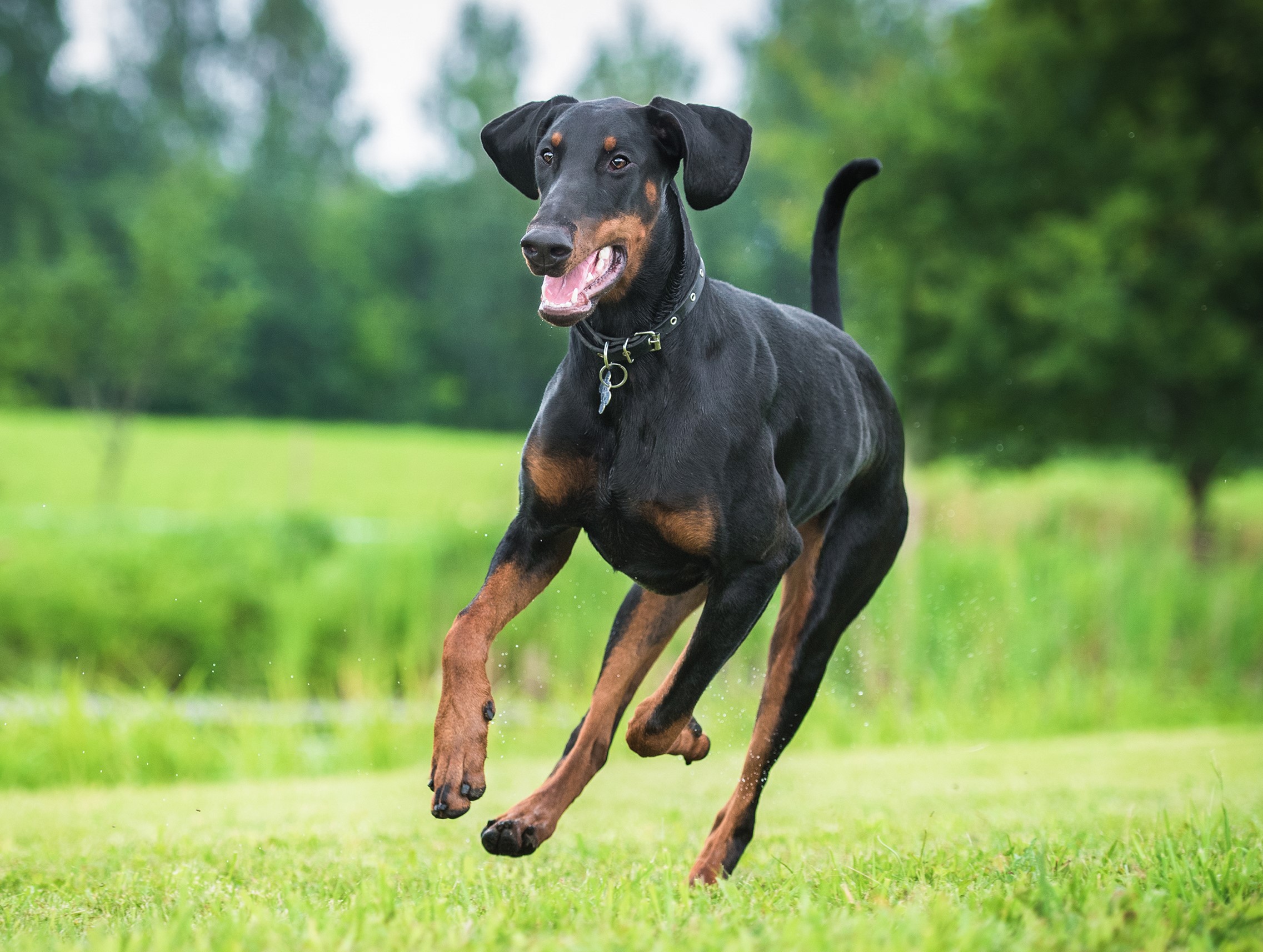The Dobermann is a medium-large breed developed as a fearless watchdog in 19th Century Germany. This distinctive breed oozes nobility and elegance, with its sleek, powerful physique and elegant even gait.
It has a wedge-shaped head with naturally floppy ears, wears a keen and intelligent expression and is covered with a short glistening coat that is either black, blue, red or fawn, with rust markings on the face body and tail. Dobermanns are very active and strong dogs that require a minimum of two hours of exercise every day to keep them happy and healthy and help them burn off some of their energy. They love nothing more than playtime with their owners and their eagerness to learn, coupled with their intelligence, means that they enjoy obedience training. Dobermanns are very people-oriented dogs and form a close bond with their owners. They also make good playmates for older children, although due to their size and energy, they may be too boisterous for younger children. Dobermanns are generally trustworthy and gentle around their family, but they can be suspicious and stand-offish with strangers and wary of other dogs. It is therefore crucial that this breed is well socialised from an early age, exposing them to as many different experiences, people and dogs as possible. Even with consistent socialisation, they retain a strong chase instinct and are best not left unsupervised with other household pets. For the experienced dog owner, who has lots of time, energy and plenty of space, the Dobermann makes a loyal and loving addition to the family.

History
The Dobermann originated in 19th Century Germany, where a man named Herr Louis Dobermann lived and worked as a night patrolman and tax collector. He wanted to develop a fierce dog to protect him in his work and so began selectively breeding the most fearless locally available dogs. Some of the breeds thought to be in the mix include the Pinscher, Rottweiler, Manchester Terrier, Great Dane and Greyhound. The resulting Dobermann soon gained a reputation as a powerful and intelligent dog, and although they are still used worldwide as guard dogs, they are also used as police, military and rescue dogs.





